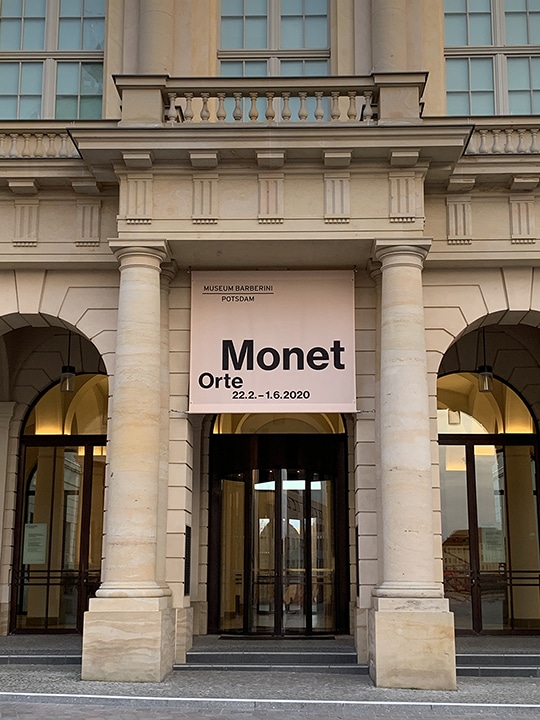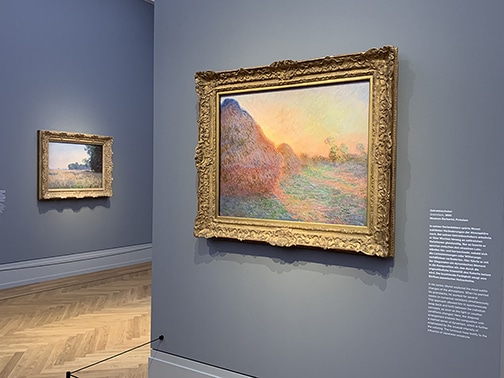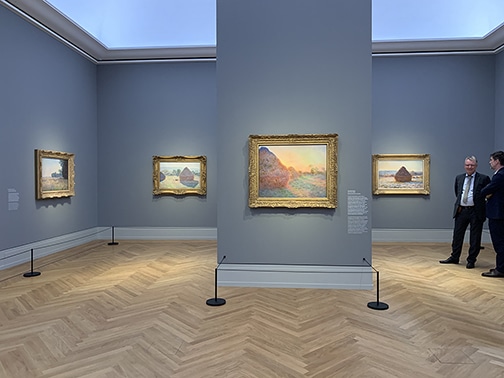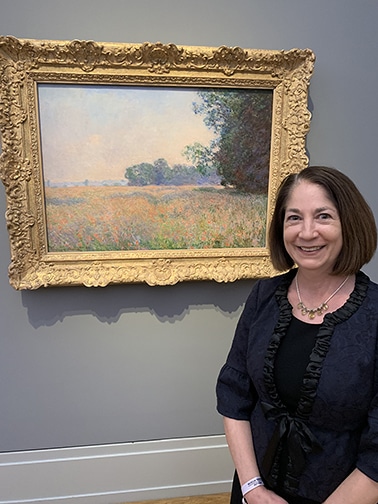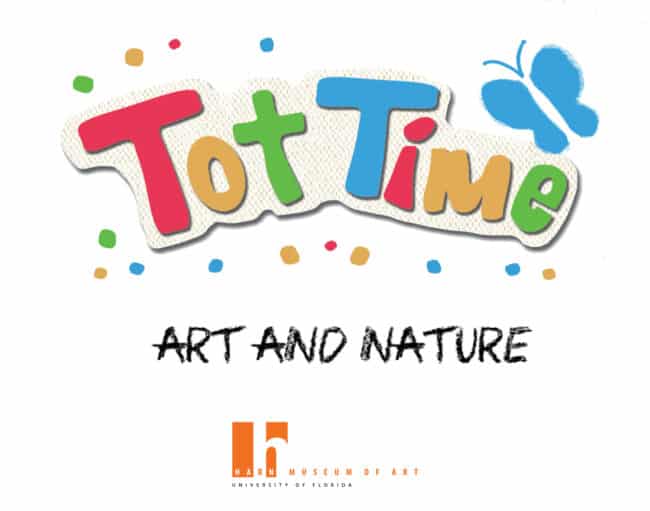In February, I traveled to Germany as an art courier for our Champ d’avoine (Oat Field) landscape by Claude Monet. Most visitors to the Harn Museum of Art are familiar with this gorgeous landscape painted by Monet in Giverny—a village in Normandy, France, where he lived from 1883 to 1926. In fact, this is probably one of the museum’s most famous works of art. It’s certainly one of my favorite pieces in the collection, so I’m not surprised that we received a request from the Museum Barberini in Potsdam, Germany, to include it in their Claude Monet: Places exhibition. The show was co-organized by the Denver Art Museum where the exhibition had opened last October under the title Claude Monet: The Truth of Nature. Even though I knew I would miss Champ d’avoine, I was eager to share it with a wider audience in the company of 110 gorgeous paintings by Monet!
When I arrived at the Museum Barberini on February 19, I was surprised to learn that ours was the second to last painting to be installed. This was very lucky for me because it meant I could see the nearly completed exhibition before the throngs of visitors on opening day (February 22). I was stunned to see the gallery where Champ d’avoine was to be installed. The room was about 60 feet long and had a ceiling height of about 20 feet. This particular gallery centered on Monet’s infatuation with Giverny’s rural beauty and included many other Giverny landscapes such as images of poplar trees, flowered meadows, views of the River Seine, and his iconic grain stacks.
As the Harn courier, my role was to oversee the proper handling, security and care of Champ d’avoine as it was uncrated and installed by the Museum Barberini staff. I also joined the conservator in an assessment of the painting’s condition. The assessment involved inspecting the landscape with special lighting and a magnifying lens to look for evidence that the canvas had become stressed during its travel. For example, we looked for cracks and evidence of paint loss. To my relief, our painting was in great shape. This was to be expected since it had been assessed by a conservator before the trip and was deemed safe for travel.
The other eleven galleries devoted to the exhibition were equally stunning. The exhibition spans Monet’s entire career and includes paintings representing the places where he worked, such as the rugged Normandy coast, the sunny Mediterranean, London, the Netherlands and Norway. It was a thrill to see our Champ d’avoine hanging among works from such prestigious lending museums as Musée d’Orsay in Paris, The National Gallery in London, Van Gogh Museum in Amsterdam, Museum of Fine Arts in Boston, and the Metropolitan Museum of Art in New York, just to name a few.

As with so many museums around the world, the Museum Barberini closed to the public for a period of time in response to the spread of COVID-19. Yet, during the first sixteen days of the exhibition (from February 22 to March 12), 51,824 visitors had seen the exhibition which is a huge number! Also, the exhibition had over 2,500 new followers on Instagram, 347,980 users reached on Facebook, and 477,800 Twitter impressions! The Museum Barberini re-opened on May 6. I look forward to equally impressive statistics for the last two months of the exhibition before it closes on July 19. But most of all, I look forward to the exciting return of Champ d’avoine in August!


